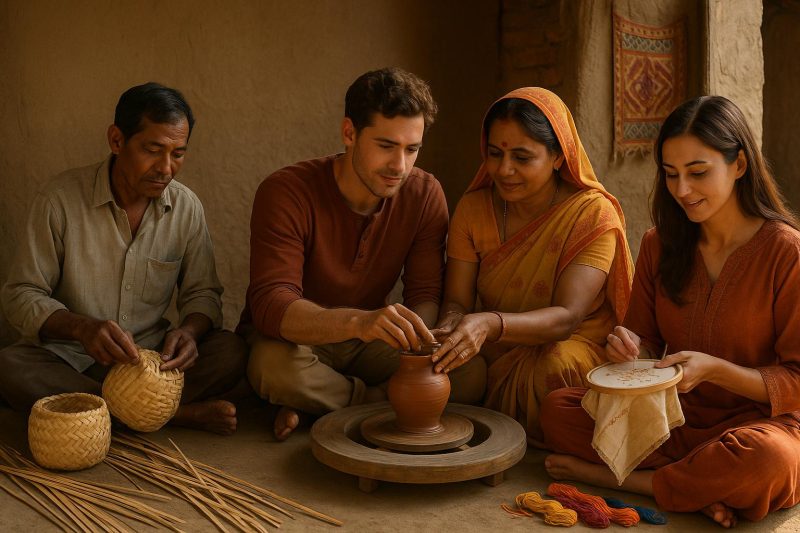Introduction to Traditional Crafts
Traditional crafts have long played a significant role in the cultural fabric of societies globally. These practices encompass a wide array of skills and techniques, often meticulously preserved and passed down through successive generations. Engaging with local artisans offers an invaluable avenue to explore these timeless practices and to gain a deeper understanding of their cultural significance.
Understanding the Value of Traditional Crafts
Traditional crafts provide an insightful glimpse into the history and social customs of various communities. These crafts characteristically utilize locally sourced materials and incorporate distinct techniques that are intimately tied to specific regions. Through learning from local artisans, individuals can develop a profound appreciation for the artistry and dedication involved in creating these crafted works.
Exploring Traditional Crafts Around the World
The array of traditional crafts is as diverse as the cultures and geographies from which they originate. Each form of craft brings with it unique dimensions and aspects that are reflective of the cultural heritage within which they were formed.
Textile Weaving: This venerable craft involves the production of fabrics through the use of looms. The techniques employed in textile weaving vary extensively from one locale to another, often influenced by regional styles, resources, and cultural priorities.
Pottery: The craft of pottery entails the molding and firing of clay to create both functional and decorative items. Pottery methods and styles are deeply embedded in local traditions, with each piece reflecting the artistic conventions and needs of its particular culture.
Wood Carving: In wood carving, artisans expertly transform raw wood into detailed artistic or functional items. These carvings frequently exhibit cultural motifs and symbolism, offering both aesthetic appeal and cultural narration.
For a more in-depth exploration, additional resources such as this comprehensive guide on folk art may offer further insights into the vast world of traditional crafts.
Benefits of Learning from Local Artisans
Learning traditional crafts directly from local artisans provides a plethora of benefits that extend beyond the simple acquisition of new skills:
- Preservation of Culture: Engaging with artisans in the craft learning process significantly aids in the preservation of cultural heritage. This engagement helps ensure that these valuable traditions are passed onto future generations intact.
- Skill Development: By mastering the intricate techniques of traditional crafts, learners acquire unique skills that can be applied across a range of creative disciplines and can contribute to personal and professional growth.
- Community Engagement: The interaction between learners and artisans fosters a sense of community, while also offering economic support to craftspeople. Such engagements also serve to strengthen communal ties and mutual understanding.
Steps to Learn Traditional Crafts
To embark on the journey of learning traditional crafts from seasoned local artisans, consider following a structured approach that facilitates both engagement and learning:
1. Research and Identification: Conduct research to determine which craft interests you the most and identify artisans renowned for their expertise in that specific area.
2. Engage and Learn: Approach these artisans with respect, demonstrating a sincere interest in learning about the craft. Establishing a rapport based on mutual respect sets the stage for an enriching learning experience.
3. Attend Workshops: Participation in workshops or short courses organized by artisans can provide invaluable hands-on experience and practical exposure to the craft.
By adhering to these guidelines, you can effectively acquire traditional crafting skills while simultaneously contributing to the preservation of these cultural practices.
Final Thoughts
In conclusion, the experience of engaging with traditional crafts through local artisans offers a powerful and meaningful means of connecting with cultural heritage. It allows individuals to acquire valuable skills while enhancing cross-cultural understanding and supporting the sustainability of artisanal crafts. For those inspired to engage with these rich traditions, a multitude of resources and opportunities exist to embark on this enlightening journey. Seek out experiences that broaden your comprehension of cultural narratives and relish the opportunity to contribute towards the continuation of artisanal crafts.
Through thoughtful engagement with traditional crafts, we not only enrich our own cultural perspective but also play an active role in supporting and sustaining the rich heritage of craftsmanship for future generations.

